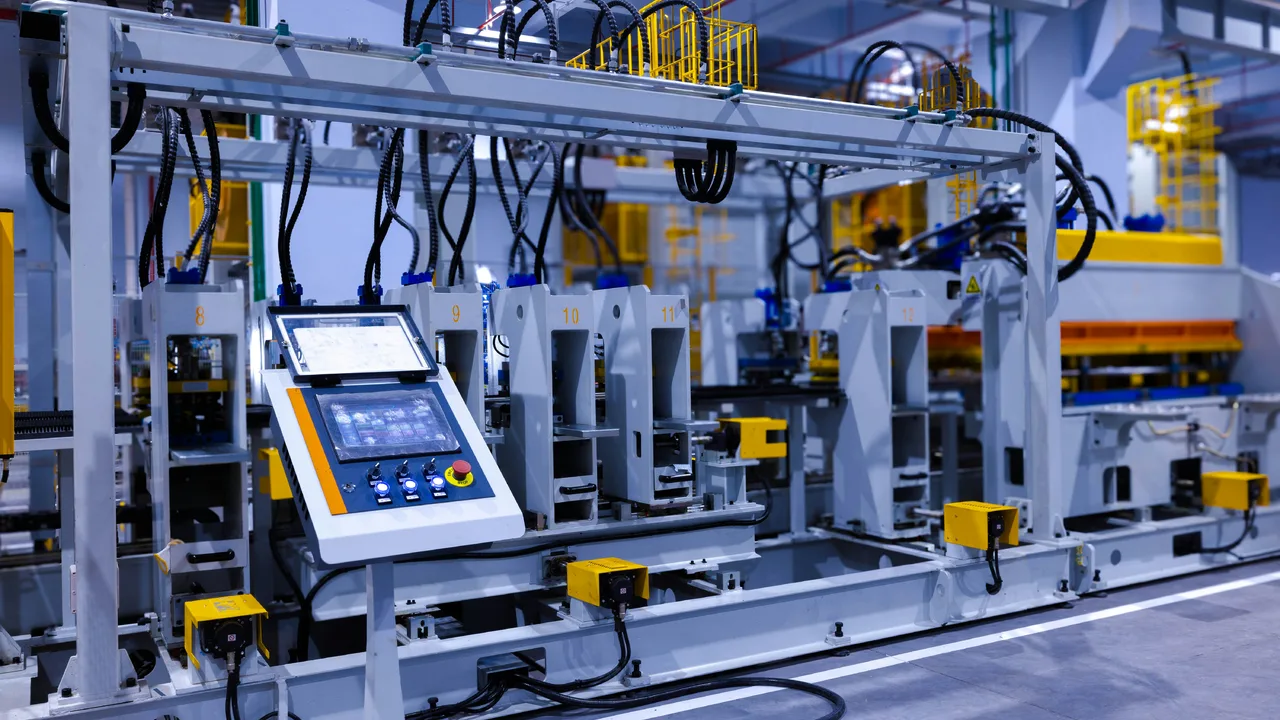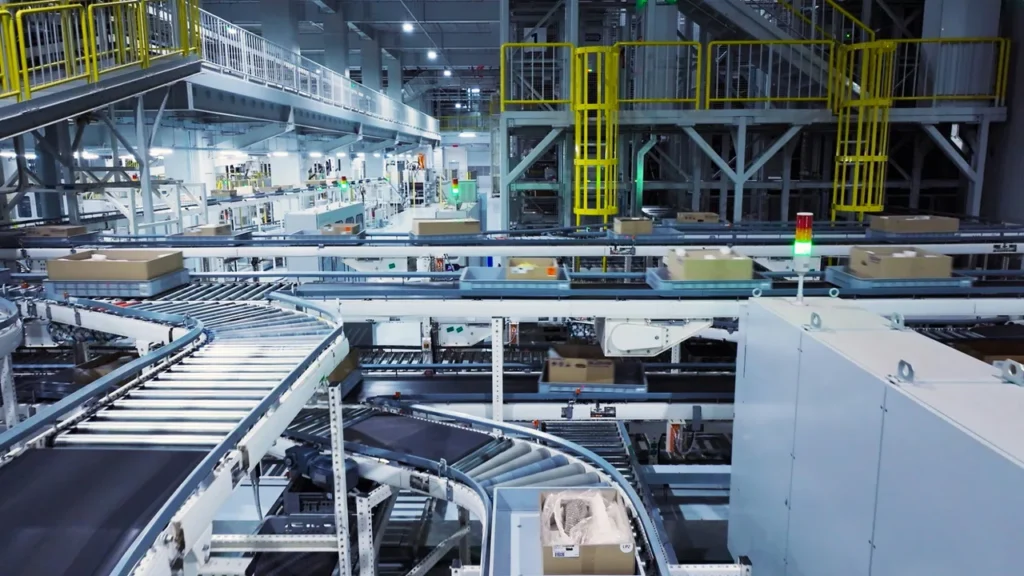The global manufacturing landscape is undergoing a revolutionary transformation. As technology evolves at an unprecedented pace, traditional production facilities are being replaced by the smart factory—a fully connected, intelligent, and adaptive environment driven by data and automation. This transformation, known as Industry 4.0, represents the next leap in industrial development, where machines, humans, and systems collaborate seamlessly through industrial IoT and digital production technologies.
Understanding the Concept of Smart Factory
A smart factory is far more than a highly automated plant. It is a dynamic ecosystem that combines connectivity, data analytics, and autonomous decision-making to optimize production. By using sensors, cloud platforms, and intelligent machines, smart factories collect real-time data from every stage of the manufacturing process—enabling predictive actions instead of reactive responses. The result is a flexible, efficient, and self-learning production system that continuously improves performance.
Core Principles of Industry 4.0
- Interconnectivity: Through industrial IoT, devices, machines, and systems communicate in real time, forming a unified digital network.
- Automation and Robotics: Autonomous robots perform repetitive or hazardous tasks with precision and consistency, reducing human error.
- Data Analytics: Continuous monitoring and analytics drive informed decision-making, improving quality control and throughput.
- Cyber-Physical Systems: Physical machines and digital models coexist, allowing instant feedback and optimization.
- Artificial Intelligence: Machine-learning algorithms identify trends, predict failures, and enhance process efficiency.
Key Technologies Driving Smart Factories
The smart factory relies on a combination of disruptive technologies that interconnect the physical and digital worlds. Each component—from sensors to cloud computing—plays a critical role in shaping tomorrow’s manufacturing systems.
The Role of Industrial IoT
Industrial IoT (IIoT) forms the backbone of modern smart manufacturing. It integrates sensors, actuators, and networks that collect and transmit data across the production floor. These intelligent devices track machine performance, temperature, vibration, and energy consumption, sending the information to analytics platforms that generate actionable insights. With this data, manufacturers can perform predictive maintenance, avoid unplanned downtime, and extend equipment life cycles.
According to the International Energy Agency (IEA), industrial connectivity can increase energy efficiency by more than 15 percent in certain manufacturing sectors, demonstrating the tangible benefits of data-driven operations.
Artificial Intelligence and Predictive Analytics
AI transforms the smart factory into a self-optimizing organism. Machine-learning models process vast datasets to detect anomalies, adjust process parameters, and even design production schedules automatically. In quality assurance, AI-powered cameras identify microscopic defects invisible to the human eye, ensuring consistent output and reducing waste. Predictive analytics combines historical and real-time data to anticipate potential failures, minimizing costly interruptions.
Cloud Computing and Digital Production
Cloud infrastructure enables scalable data management and seamless collaboration. Instead of isolated control systems, smart factories now operate through unified cloud environments that integrate ERP, MES, and SCADA platforms. This integration facilitates digital production—a workflow where design, scheduling, and logistics occur simultaneously across the entire supply chain. Engineers can monitor facilities remotely, update production lines instantly, and implement design changes without halting operations.
Transforming Manufacturing Operations
The journey from traditional automation to the smart factory represents a profound operational shift. Earlier generations of manufacturing relied on pre-programmed machines following static instructions. In contrast, modern systems leverage sensors and algorithms to make autonomous decisions in real time. When a deviation occurs—such as temperature spikes or raw-material inconsistency—the factory automatically recalibrates parameters to maintain product quality.
Human–Machine Collaboration
Despite widespread automation, people remain at the heart of digital production. Smart factories emphasize collaboration between humans and intelligent machines, often referred to as “cobots.” Workers use wearable devices and augmented-reality (AR) glasses to visualize data overlays, receive maintenance instructions, or simulate complex assembly steps. This synergy enhances safety and productivity while ensuring human creativity guides automated systems.
Benefits of Smart Factory Implementation
Adopting a smart factory model offers multiple advantages that extend beyond cost savings. The ability to gather and analyze massive data streams empowers manufacturers to respond faster to market changes and customer demands.
Operational Efficiency and Productivity
- Reduced Downtime: Predictive analytics and real-time alerts enable proactive maintenance.
- Improved Yield: Continuous monitoring eliminates process variations, enhancing product quality.
- Agility: Modular production lines can switch between product models within minutes, improving responsiveness.
Sustainability and Resource Optimization
The smart factory also contributes to sustainable manufacturing. Intelligent energy-management systems monitor power usage, automatically adjusting equipment schedules to reduce waste. By integrating industrial IoT data, manufacturers can track carbon emissions and water consumption, aligning operations with global sustainability goals. In addition, circular-production principles ensure that materials are reused and recycled efficiently, closing the loop on waste.
Challenges and Considerations in Smart Factory Deployment

While the smart factory offers enormous benefits, implementing one is far from simple. Many manufacturers struggle with legacy equipment, incompatible software systems, and workforce adaptation. Building an interconnected environment requires not just investment in technology but also a cultural shift toward data-driven decision-making.
Technical and Organizational Barriers
- Integration Complexity: Older machinery often lacks digital interfaces, making it difficult to connect to industrial IoT networks.
- Cybersecurity Risks: With thousands of connected devices, the attack surface expands, requiring robust encryption and monitoring systems.
- Initial Costs: Setting up sensors, cloud infrastructure, and analytics platforms demands significant capital investment, though long-term gains usually outweigh the expense.
- Data Management: The flood of production data requires advanced systems for storage, processing, and privacy compliance.
Workforce Adaptation and Skills Development
Another critical challenge lies in reskilling the workforce. Operators, technicians, and engineers must learn to interact with data systems, interpret analytics, and manage digital workflows. Training programs and partnerships with universities are helping bridge this gap. The role of the modern worker has shifted from machine operator to data-driven decision-maker, emphasizing collaboration with automation rather than replacement by it.
Real-World Examples of Smart Factories
Across the world, leading manufacturers are embracing smart factory principles to gain competitive advantage. These real-world implementations demonstrate how industrial IoT and digital production translate into measurable success.
1. BMW’s Fully Connected Automotive Plant
BMW’s Regensburg plant in Germany is a model of smart factory excellence. Every workstation, robot, and conveyor belt is connected through industrial IoT sensors. The factory’s digital twin—a virtual replica of the entire production line—monitors real-time performance, predicts equipment maintenance, and automatically adjusts logistics flow. This integration has reduced downtime by over 25% while increasing output quality and consistency.
2. Siemens Electronics Factory (Amberg, Germany)
Siemens has implemented one of the most advanced digital production environments in the world. The Amberg facility operates with nearly 100% automation, where machines communicate autonomously to produce programmable logic controllers (PLCs). AI-driven analytics evaluate more than 50 million data points daily to ensure precision and zero-defect manufacturing.
3. Haier’s Smart Factory Network in Asia
In China, Haier has established a global network of intelligent manufacturing plants. By applying industrial IoT and real-time data exchange between suppliers, production lines, and consumers, Haier achieves mass customization. Each product can be adjusted to customer preferences during assembly. This approach combines flexibility with efficiency, setting a new standard for consumer electronics production.
Future Trends in Smart Manufacturing
The evolution of the smart factory is ongoing. As connectivity improves and computing power increases, new technologies are emerging that push the boundaries of what’s possible in digital production.
Digital Twins, 5G, and Autonomous Systems
Digital twin technology creates real-time simulations of entire production ecosystems. Combined with industrial IoT sensors, these twins can predict system performance, test process changes virtually, and identify inefficiencies without interrupting actual operations. Meanwhile, 5G networks enable ultra-low latency communication, essential for real-time robotic coordination and remote maintenance. Autonomous guided vehicles (AGVs) and drones further enhance intralogistics efficiency, making manufacturing facilities more dynamic and responsive.
Integration of AI-Driven Supply Chains
The smart factory does not exist in isolation. It forms part of a connected ecosystem that includes suppliers, logistics partners, and customers. AI-driven supply chains synchronize data across these entities, providing end-to-end visibility. When demand fluctuates, predictive algorithms automatically adjust production rates and inventory levels, ensuring optimal resource allocation. This connectivity creates an adaptive industrial network capable of responding instantly to market changes.
Economic and Environmental Impact
Beyond operational gains, the transition to smart factories has profound economic and environmental implications. Automation reduces waste and downtime, while energy-optimization algorithms cut electricity consumption. For manufacturers, these efficiencies translate into higher profit margins and a smaller carbon footprint.
Economically, the shift to digital production fosters the growth of high-value jobs in data science, software engineering, and advanced robotics. Nations investing in Industry 4.0 technologies are witnessing increased competitiveness and export potential. According to industry studies, global spending on industrial IoT is projected to surpass $1 trillion by 2030—illustrating the scale and momentum of this transformation.
Future Outlook: The Next Decade of Manufacturing
Looking ahead, the smart factory will continue to evolve as the centerpiece of industrial progress. AI will handle complex decision-making, while humans focus on innovation, design, and strategy. Modular and decentralized factories will emerge, enabling companies to build smaller, agile facilities closer to demand centers. 3D printing and additive manufacturing will complement traditional processes, accelerating product development and reducing material waste.
As more factories embrace digital transformation, data standardization and interoperability will become critical. Global frameworks—like OPC UA and ISO standards—will ensure consistent communication between systems, suppliers, and customers, making the entire industrial landscape more transparent and efficient.
Conclusion
The rise of the smart factory marks a new chapter in the history of manufacturing. By integrating industrial IoT, automation, and digital production, companies are unlocking levels of efficiency and flexibility once thought impossible. The fusion of intelligent machines, connected systems, and skilled human oversight is redefining industrial excellence worldwide.
As Industry 4.0 continues to evolve, the smart factory stands not just as a technological milestone but as a symbol of sustainable, data-driven progress—one where innovation and intelligence power the future of global manufacturing.



